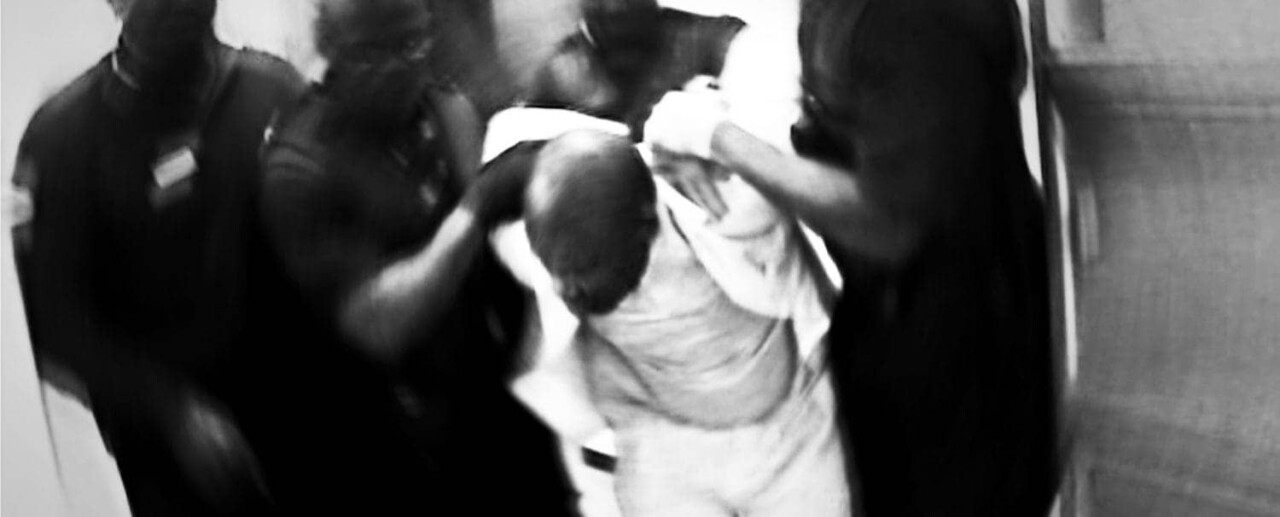
by Jason Renard Walker
Introduction
The abuse of authority within the Texas Department of Criminal Justice (TDCJ) is a primal example of how state power can be abused in a police state. That’s because a prison is nothing more than a guinea pig for establishing absolute control over a society. It is the nucleus through which a repressive regime gains military currency that can be violently spent in America and abroad.
The control tactics used in the “free world” by those in positions of power have first been tested, refined and exaggerated in prisons across the U.S. since their introduction as an extension of slavery. The judicial branches of government intentionally used the most harsh examples of abuse as the threshold a prisoner must reach before it becomes a constitutional violation. This gives prison authorities complete control over remedying injuries they are responsible for, but that don’t “shock the conscience.”
Before chemical agents such as oleoresin capsicum, mace, pepper spray and tear gas were used as tools of public crowd control, they were deployed in prisons as an unjustified means to punish and compel submission. Way before state of the art surveillance cameras were used as a dragnet to spy on entire cities, less advanced versions were being used in prisons to observe the daily activities of prisoners, then handed over to the DOJ for analysis. Before police officers were suiting up in full body riot gear in response to peaceful protests: multi-man cell extraction teams were gassing, bum rushing, subduing, then brutally beating blinded and defenseless prisoners for little if any reason at all.
Not only did the state and federal government understand that these illegal practices pervaded America’s prisons; they played blind to them. When these overtly abusive activities didn’t conjure an uprising, and the ratio of staff disciplined to prisoners assaulted was one-sided, this aroused their interest. They hired penologists and experts for the purpose of learning how to use these same methods in a non-prison environment, while producing the same results.
While there were bumps along the way that caught them off guard, like the 1971 Attica prison uprising, this played perfectly into the hands of the government because it gave them the forethought to expect an uprising in society every now and then and how to quell it, using lethal force tantamount to a prison riot of the same size.
The passivity of drug use, contraband and prisoner-on-prisoner violence is another weapon that has proven effective in controlling prisons, as one serves the others. In the event prisoner deaths and violence attract media attention and public protest, a slew of reactionary impractical policies are enforced, not to prevent the violations but to restrict more rights and privileges under that notion.
Manufactured drug problem
As a pretext to preventing our families and friends from sending mail, pictures and birthday cards to us, under the notion the mail was being sprayed with liquid drugs, on July 17, 2023. TDCJ enforced a statewide mail ban, and a Securus Technologies-owned digital mail processing center in Dallas, Texas, was created for mail to be sent there for scanning and digitally uploading to our Securus tablets.
But this move was not something that happened overnight. In 2019 mail-room employees went on a rampage and began denying random prisoners’ mail suggesting it contained an unknown or suspicious substance. When this occurred, the prisoner was not allowed to appeal the decision, have the parcel drug tested, return it to the sender, or get a copy printed out. He was only given a notice that it was denied and the mail was destroyed without the warden or the Office of Inspector Generl (OIG) being notified of the denial.
Given the circumstances under which the denials were being dished out and looking at today’s policies, this was obviously a premature scheme to manufacture a drug smuggling operation that had not yet existed statewide, but that they thought they would have to invent in order to justify the upcoming restriction of our rights and privileges. At the time, they weren’t aware that Covid 19 was about to lock down the world and the drug trade and violence in prisons was about to spiral out of control because of it. The mission was societal control through the abuse of rules and regulations that continue to fail the sniff test.
Little did they know, our right to receive non-legal paper mail would be restricted with no resistance and visits would be more secure. But the existence of staff never changed. An influx of drugs and contraband within Texas prisons had to meet the high demand, making the purchase of them a lot easier than gaining access to a pencil and a piece of paper.
Two months after the digital mail rollout, TDCJ enforced a statewide prison lockdown. The reason for the lockdown, executive director Bryan Collier said, was an increase in violence due to an increase in contraband. He suggested that the lockdown would remain until each prison was thoroughly searched. But there was never any real statewide plan implemented to confront how contraband was entering the prisons.
Instead of restoring our right to receive paper mail from the public, as it was obviously not the problem, they moved the goal post, tightened the vise and created more rules and policies that gave them more control. In contradiction to this, more drugs infested the prisons, more prisoners continued to overdose and the root cause has not been uprooted. The remedy? More repression and fewer privileges.
On Dec. 1, 2024, TDCJ slipped in another tool of societal control through the implementation of major disciplinary infraction 14.0 – Use or possession of any intoxicants/ and or unknown substances. Under the banner of this rule, “This includes the use or possession of tobacco products, an unknown substance, and/or an unknown substance which results in altered behavior and/or appearance, including the loss of the normal use of mental and physical faculties.”
Now whether or not prisoners are under the influence of drugs isn’t determined by positive urine tests or possession. It mendaciously falls under the purview of prison guards and lowly medical staff, who lack the necessary training and psychiatric judgement to distinguish between mental health breakdowns and unknown substance abuse. It also gives vindictive staff the authority to file bogus disciplinary reports on sober prisoners they have issues with, without having to produce any evidence, by simply stating they were behaving oddly. (1)
As of this writing, TDCJ has padded a wealth of new policies on top of the other impractical “war on drugs” rules that have absolutely no effect. This new boot camp style response gives guards the authority to punish an entire cell block and dorm of prisoners behind the actions of one. If a prisoner is caught smoking in his own cubicle, every prisoner in the housing area will be put on lockdown. Those not there at the time will be locked down upon completion of their work or school assignments.
A prime example occurred on Aug. 28, 2025, here at Powledge Unit (Texas calls each prison a unit – ed.) when Sgt. Barrett was making her rounds in a dorm and spotted someone getting high. Instead of this person being removed from the environment and punished, the dorm was locked down and this person kept getting high. According to the source that provided this information, crystal meth was found during a search.
There hasn’t been any organized resistance or unity in response to this. Prisoners at select units have drawn inward and repressed themselves through a popular rule created to punish users causing a lockdown — a very brutal group beating.
Prison guards at these same select units are aware that prisoners have succumbed to taking out TDCJ’s policies on themselves. Instead of having to enforce their own “war on drugs” rule, guards have left drug users to their own devices, since the willingness to use violence as a deterrent has been normalized. The hypocrisy in the matter is that those involved in the distribution of prison contraband are the same ones promoting the group beatings.
On top of that, the administrative consequences for violating any drug-related rules is a lengthy loss of phone privileges, confiscation of the Securus tablet, visitation restrictions, and a block on money wire transfers to our commissary account. Ironically, there is more focus on controlling the drug addicts for taking advantage of drugs introduced by TDCJ than on challenging these draconian rules that exist under the pretense of tackling the issues that this same entity is actually promoting and profiting off of.
This is just one phase of repression on TDCJ’s evolutionary timeline of societal control.
Institutionalized beatings
If societal control was a cliché that defined a prison’s vernacular, TDCJ would be the litmus test used to measure the cruelty of other state prison systems. Texas prisons transformed from a system engaged in overtly racist and deadly convict leasing practices in the early 20th century (2), to a more subtly repressive regime in the 1970s.
During the latter era the art of pitting prisoners against each other, by giving one group privileges to control the other group, was a state-sanctioned act. This is when inmate guards known as politicians, turnkeys or building tenders, were hand-selected by the warden and approved by the state classification committee to help with staffing shortages. Their only reason for existing was to control the prisoners in whatever fashion achieved this end — whether it be murder, a beating, extortion or sexual assault. They often roamed the compounds with prison-issued bats, broom handles and makeshift butcher knives, ready to enforce compliance. And whenever they did, they were rewarded handsomely.
Most of the Hispanic and white prison gangs that still exist in TDCJ were created to protect themselves from these unhinged rogues. It is sad to say, after there were no more building tenders to worry about, members in some of these gangs fell out with each other, created factions and started going to war among themselves.
I’ve provided a more in-depth account on building tenders in pages 9-11 of my book, “Reports From Within the Belly of the Beast,” which readers can view to get a sense of how horrific that era was, without me restating it in this essay.
Those days are long gone, but the experiment to create the most perfectly controlled environment is still being passed down, from one generation to the next. The Connally Unit’s medium and close custody building known as “the island” is a prime example. The nickname came in response to an unwritten policy that restricted prisoners leaving the building except for medical and law library appointments.
During my short stay there in 2022, I saw first-hand how societal control gripped its talons around the prison politics on the island, while the general population was the complete opposite. Instead of hand-selected prisoners serving the administration as knife-clutching building tenders, they were given brooms with the official work assignment of building janitors or SSI, who were more often used to pass out meals, sweep the cellblocks and fight for the guards. Those that were “too friendly with the broom” or that put the priorities of prisoner rights over the interests of the administration were fired quickly. The most common “brooms” used were those with a voice intimidating enough to keep rebels in line. The agenda to reward them for their dedication to the system remained the same; the names of who they are simply evolved to fit the times.
There are a few cases in point that I’d like to note because they give context to the sycophancy of broom handlers, not just at the Connally Unit, but at a majority of the maximum security prisons in Texas. At the two victims’ prior request, I will not name them. And to make things clear: Not all broom handlers behave this way, but the ones that don’t are few and far between, as they’re always ousted by the sycophant.
One sycophant in particular arrived from the close custody pod after being promoted to medium custody. He was obviously in search of reestablishing his reputation and broom handling duties.
During this same week a prisoner had a heated exchange with a guard known for staging fights. To gain currency and merit, the rep seeker accepted the bribe of bloodying the prisoner in exchange for an SSI job. One bloody-nosed prisoner later, he strutted, to and fro, with the broom and a grin.
Days later, another similar occurrence happened during a verbal exchange between a guard and a prisoner he’d denied a visitation request form to. After the defeated prisoner returned to the cell block, thinking it was over, this officer and his sergeant gave a prisoner from another part of the building entry into the pod so he could retaliate on their behalf. This goon wasn’t fighting for a broom; he already had that. He was attempting to earn a portion of the officer’s home-cooked meal. The fight did take place, but the prisoner didn’t earn his keep because the guard was dissatisfied with the outcome.
Even though these incidents happen sporadically throughout the building, knowledge that the guards and ranking staff, hired to oversee us, are weaponizing the environment against us, creates a seemingly helpless prisoner. It’s not a matter of prisoners promoting the culture because they agree with the structure. With numbers, many are willing to resist. The controlling factors are pleasure and pain. You’re either inflicting pain for pleasure or enjoying pleasure by capitulating to being controlled. Any resistance is matched with collective brute force.
Jeramey Jozef Hernandez was at the Connally Unit during these incidents and is also a victim of administrative societal control. In the summer of June 5, 2022, Hernandez tried to assert his right to access a respite area for longer than the 15-minute unwritten policy that the administration illegally had officers enforcing. After failing to convince building officer C. Becerra that the “Respite training and education” policy that allows prisoners to access respite as long as they wish was federal law, he was given the option to either leave or be taken to lockup. He stayed and was ultimately met by a team of guards with a portable video camera, handcuffed and taken to lockup.
One of these guards, at the behest of ranking staffers Capt. B. Guardiola and Capt. M. Maldonado (a lieutenant then) assaulted him by slamming his face in the ground (while cuffed from behind) outside the presence of surveillance cameras, breaking several teeth. In fact the portable camera being used was turned off prior to the assault. (3) Hernandez was written a false disciplinary for threatening an officer, demoted to medium custody, and it was back to business as usual for the actors.
Prisoners like this are rarely seen as martyrs or trailblazers for standing up for their rights. They are often branded as “the crazy nigga” and “crash dummy” by their counterparts, who wouldn’t dare file a grievance or even think about telling their families about the injustice they are facing.
Quite frankly, they are very self-aware that admitting to someone else that this is the case leaves them with the option to either be that crash dummy or admit cowardice. From my observation, the way many avoid having to address the ordeal is by forever cozying up to the side that despises organizing against it. This way their passivity is externally justified while they’re also embraced by many.
The Polunsky Unit, home of Texas’s death row, is a maximum security prison that dabbles with societal control. Here, prisoners aren’t beating each other up for guards. It’s the guards who are beating up prisoners for the administration. There’s no difference between either method because the end game of crushing the will to resist is the same. They’re looking to set an example for any prisoner who refuses to be domesticated. The acceptable ways of life seem to be drugs, religious soul searching, unit programming, or gangs.
I think it is important I note the race of these actors because the entire cell extraction team was a group of racist whites who love beating Blacks. The complicit camera operator and Capt. Carter, who organized the beating, are Black, opportunistically using the cell extraction team as a tool of control.
One prime example happened to Marquis Kingsbury, who is Black, in his 11 building solitary confinement cell, on July 22, 2021. (4)
Before Sgt. Schwarz, who prisoners say was involved with killing a prisoner during a cell extraction, Lt. Sliger and several other rogues on the cell extraction team gassed then beat Kingsbury unconscious. Capt. Carter approached his cell beforehand and bragged someone was on the way to gas, then beat him. Capt. Carter was under the impression that Kingsbury had thrown urine on a white female officer who was working 11 building. She wanted to show him how prisoners behave there. Not only was the officer’s accusation false, I was next door to Kingsbury, who hadn’t done anything but protest because she denied him his lunch for talking smack back to her.
Around ten minutes later the cell extraction team marched towards his door in full body riot gear with Officer Wootley, who was only there to record the ordeal with a portable camera. (obstruct the footage)
Without warning, Lt, Sliger sprayed gas in the cell, falsely blurted, “Take down the sheet,” and all five of them rushed in and punched him in the face and head repeatedly, while yelling “Stop resisting,” though he was unconscious, and each time he regained consciousness, he said they knocked him out again.
I published an article on this event, though Kingsbury had been transferred to the Michael Unit before the media and public flooded the unit’s phone and ombudsman’s office with complaints.
What the public needs to understand is that these types of assaults are very common and intentionally done in the solitary confinement areas of the prison, where the prisoner is unable to defend himself, and in front of a crowd of helpless prisoners.
Think about the murders of George Floyd and Eric Garner. Both were strangled to death in public and while a citizen’s camera rolled. Now imagine being forced to watch prison guards commit similar acts behind a locked cell door, while the cameras roll and the public never knows it happened.
The only difference between the abusive soul breaking tactics in prisons and those on the streets is that the public and the media have an opportunity to intervene and broadcast what they’ve witnessed. In prison, those locked in cells can only watch and organize against it.
Sources:
1) http://www.jasonsprisonjournal.com: New TDCJ Rule Mandates Old Corrupt Practice
2) Shane Bauer: American Prisons
3) Jason Renard Walker, Sadomasochistic Guards Use Prisoners as Human Battering Rams: http://www.sfbayview.com
4) Jason Renard Walker, Black Texas Prisoner Gassed, Brutalized, in Solitary Confinement Cell: www.sfbayview.com
Jason Renard Walker Is a prison journalist who has been publishing articles and essays in various print and online media outlets since 2016. You can view his work by visiting: www.jasonsprisonjournal.com. You can also purchase his paperback book (available on amazon.com), “Reports From Within the Belly of the Beast: Torture and Injustice Inside Texas Department of Criminal Justice.” Send our brother some love and light: Jason Renard Walker, 1532092, Powledge Unit, P.O. Box 660400, Dallas,TX 75266.





